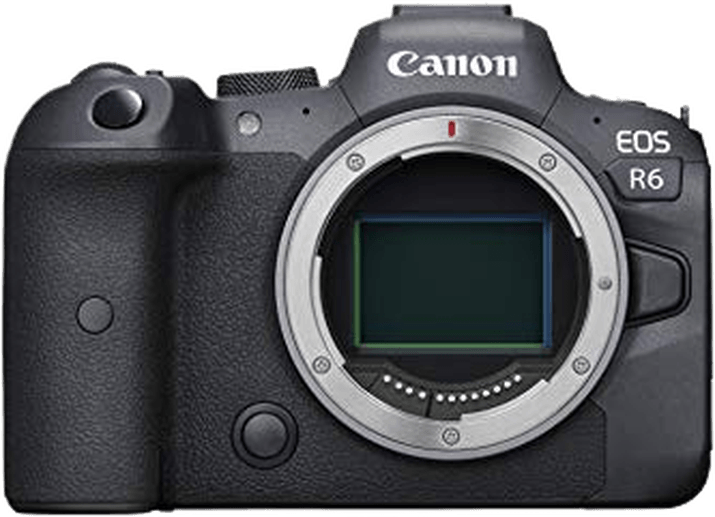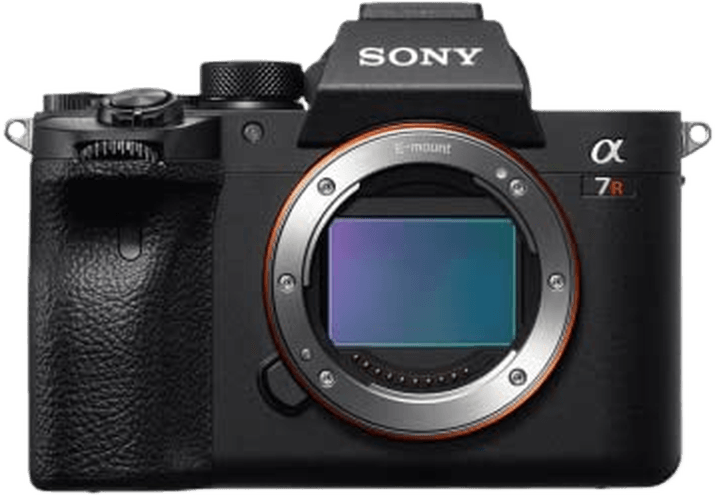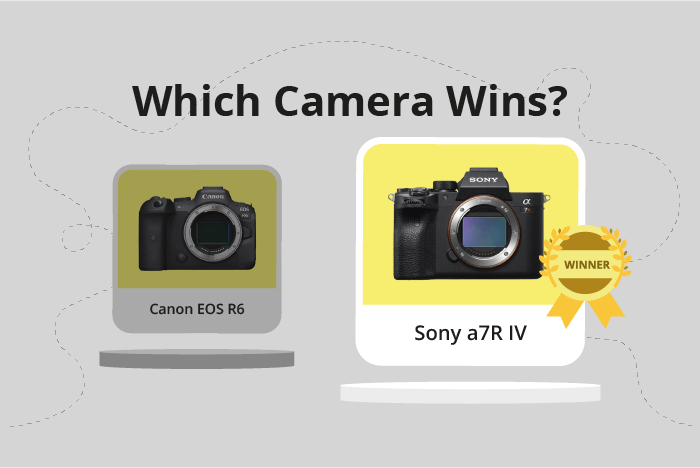Canon EOS R6 vs Sony a7R IV Comparison
Canon EOS R6

Sony a7R IV

The Sony a7R IV outperforms the Canon EOS R6 with a score of 84/100 compared to the R6’s 80/100. Both cameras share common features, such as being mirrorless and having similar sizes and weights. The Sony a7R IV is slightly lighter at 665g, while the Canon EOS R6 weighs 680g.
The Sony a7R IV excels with its higher score, which reflects its better overall performance. Additionally, it was released in 2019 at a launch price of $3500, making it a more established option in the market. On the other hand, the Canon EOS R6, released in 2020, is a more recent addition to the market with a lower launch price of $2499.
Despite the Sony a7R IV’s higher score, the Canon EOS R6 has its advantages, such as its more affordable price. Both cameras have their merits, and the choice between them ultimately depends on individual preferences and budget constraints.
Canon EOS R6 vs Sony a7R IV Overview and Optics
The Sony a7R IV outperforms the Canon EOS R6 in optics, scoring 85/100 compared to the R6’s 79/100. Both cameras share some common specifications, such as the CMOS sensor type, full-frame sensor size, and image stabilization. They also have different lens mounts, with the Canon using the RF mount and the Sony using the FE mount.
The Sony a7R IV is superior in several aspects. It has a significantly higher megapixel count at 61.2, allowing for greater detail in images compared to the R6’s 20.1 megapixels. The a7R IV also boasts a higher DXOMARK score for the sensor at 99, indicating better overall image quality. The Bionz X processor in the a7R IV contributes to its improved performance in handling high-resolution images.
On the other hand, the Canon EOS R6 has a faster shooting speed of 20 frames per second, doubling the a7R IV’s 10 frames per second. This makes the R6 more suitable for capturing fast-moving subjects or action photography. The Digic X processor in the R6 allows for efficient handling of the camera’s shooting speed.
In terms of optics, the Sony a7R IV is the clear winner with its higher megapixel count and DXOMARK sensor score, making it the better choice for photographers who prioritize image quality and resolution. However, the Canon EOS R6’s faster shooting speed gives it an edge in action photography and situations where capturing rapid movement is crucial.
Canon EOS R6 vs Sony a7R IV Video Performance
The Canon EOS R6 outperforms the Sony a7R IV in video capabilities, scoring 91/100 compared to the Sony’s 70/100. Both cameras share some common specifications, including a maximum video resolution of 4K and dimensions of 3840 x 2160. Additionally, both cameras have built-in time-lapse functionality.
The Canon EOS R6 surpasses the Sony a7R IV mainly due to its higher maximum video frame rate of 120fps, which is significantly faster than the Sony’s 30fps. This difference allows the Canon EOS R6 to capture smoother, more detailed slow-motion footage, providing more creative possibilities for videographers.
While the Sony a7R IV may not match the Canon EOS R6 in terms of video frame rate, it still offers solid video performance. Its 4K resolution and time-lapse functionality are valuable features for many users. However, the lower frame rate does limit its versatility in comparison to the Canon EOS R6.
Taking these factors into account, the Canon EOS R6 emerges as the superior choice for video capabilities. Its higher frame rate provides more options for videographers, while still maintaining the same resolution and time-lapse features as the Sony a7R IV. On the other hand, the Sony a7R IV remains a competent option for video but falls short in comparison to the Canon EOS R6.
Canon EOS R6 vs Sony a7R IV Features and Benefits
The Canon EOS R6 wins the features comparison with a score of 85/100, while the Sony a7R IV scores 83/100. Both cameras share several specifications, including a 3-inch screen, touchscreen capability, flip screen, absence of GPS, and the presence of WIFI and Bluetooth.
The Canon EOS R6 outperforms the Sony a7R IV primarily due to its higher screen resolution of 1,620,000 dots, compared to the Sony’s 1,440,000 dots. This difference provides the EOS R6 with a clearer and more detailed display, giving users an advantage when reviewing images and navigating the camera’s settings.
On the other hand, the Sony a7R IV does not have any significant advantages over the Canon EOS R6 in terms of features. Both cameras share the same screen size, and their connectivity options are identical. Furthermore, the absence of GPS in both models levels the playing field in this aspect.
Considering the features of both cameras, the Canon EOS R6’s higher screen resolution gives it the edge over the Sony a7R IV. The shared specifications between the two models indicate that they cater to similar user needs, with the EOS R6 offering a slightly better viewing experience. The lack of any standout feature in the Sony a7R IV means that it falls short in this comparison. Ultimately, the Canon EOS R6 emerges as the better choice for users who prioritize camera features.
Canon EOS R6 vs Sony a7R IV Storage and Battery
The Sony a7R IV outperforms the Canon EOS R6 in storage and battery with a score of 79/100 compared to 68/100. Both cameras share common specifications, such as two memory card slots and compatibility with SD, SDHC, and SDXC (UHS-II) cards. Additionally, both models offer USB charging capabilities.
The Sony a7R IV has a better battery life, providing 670 shots per charge, while the Canon EOS R6 only offers 360 shots. This significant difference makes the Sony a7R IV more suitable for extended shooting sessions.
On the other hand, the Canon EOS R6 does not have any distinct advantages in storage and battery over the Sony a7R IV. The lower score in this category reflects this fact.
Considering the longer battery life and equal storage capabilities, the Sony a7R IV is the superior choice in this comparison.
Alternatives to the Canon EOS R6 and Sony a7R IV
Are you still undecided about which camera is right for you? Have a look at these popular comparisons that feature the Canon EOS R6 or the Sony a7R IV:

